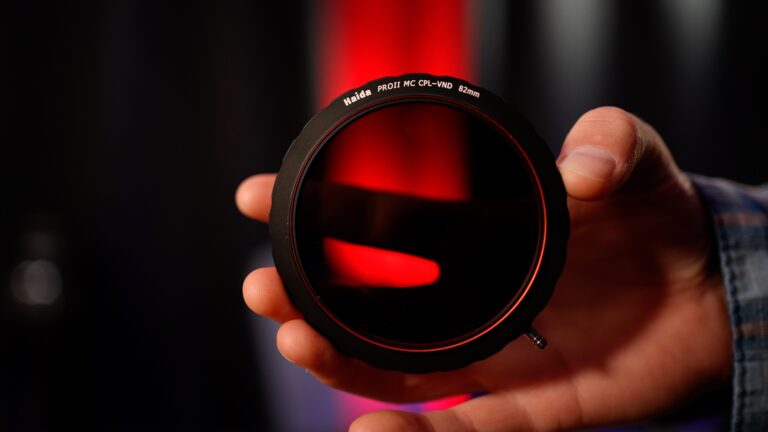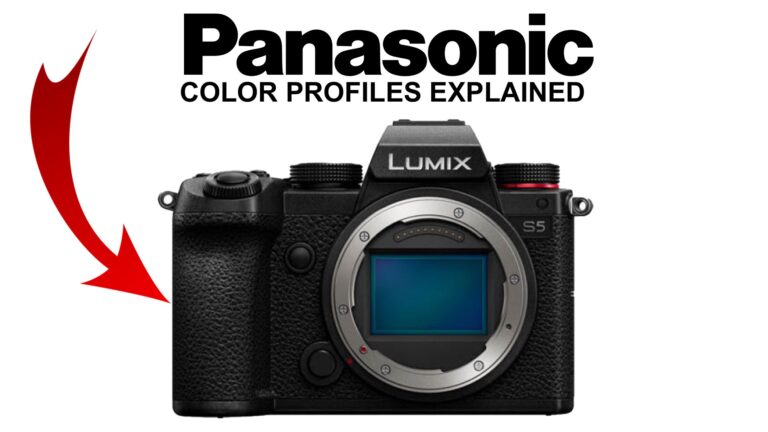Sony FX30 vs. LUMIX GH6 – The Choice is Easy?
Sony FX30 vs. LUMIX GH6
In today’s review, I compare two of my crop sensor cameras to evaluate the best camera for filmmaking and photography. This is a shootout between the Panasonic LUMIX GH6 and the Sony FX30.
The GH6 is the current flagship micro-four-thirds sensor camera on the market sporting a 25mp sensor and 6k recording. At the same time, the Sony FX30 is a baby FX3 with a video-centric design and a larger 26mp sensor.
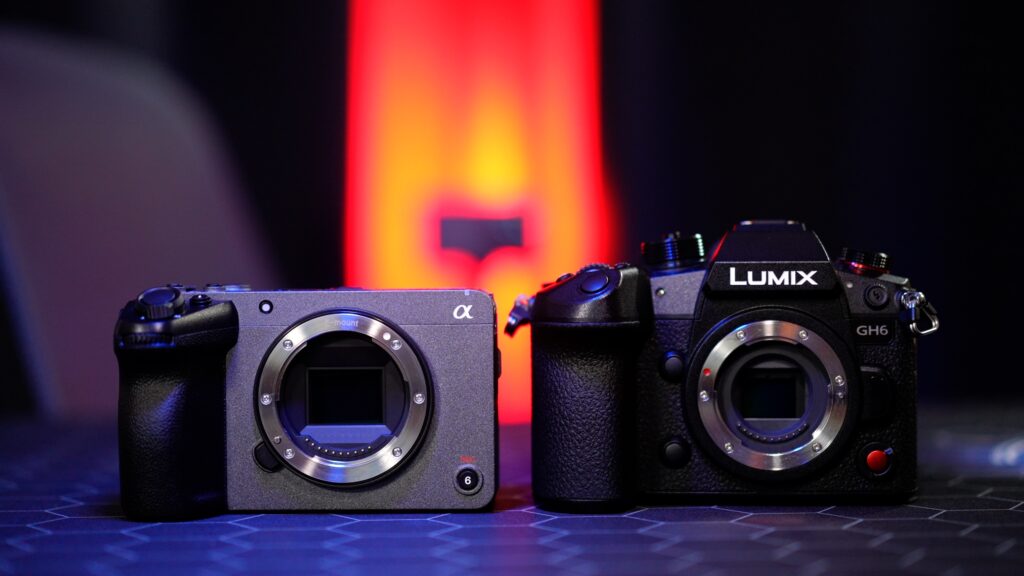
I will break this review into key sections and declare a winner based on my experience owning both of these great video-first cameras.
Sony FX30 versus Panasonic LUMIX GH6 Comparison Video
Get a GH6 or FX30 here: B&H Photo | Walmart | Amazon AU | Amazon DE | Amazon UK | Amazon Canada
FX30 vs. GH6 Handling
Let’s start with handling. Both cameras have an excellent grip, and all the buttons and dials are in intuitive positions. As a result, you can easily operate each camera almost interchangeably.
The GH6 and FX30 share many of the same button layouts, including top and front record buttons and dedicated buttons for white balance, ISO, and exposure. However, the FX30 has an advantage with the zoom rocker option on the front right for zooming in digitally with a prime or optically with a power zoom lens.
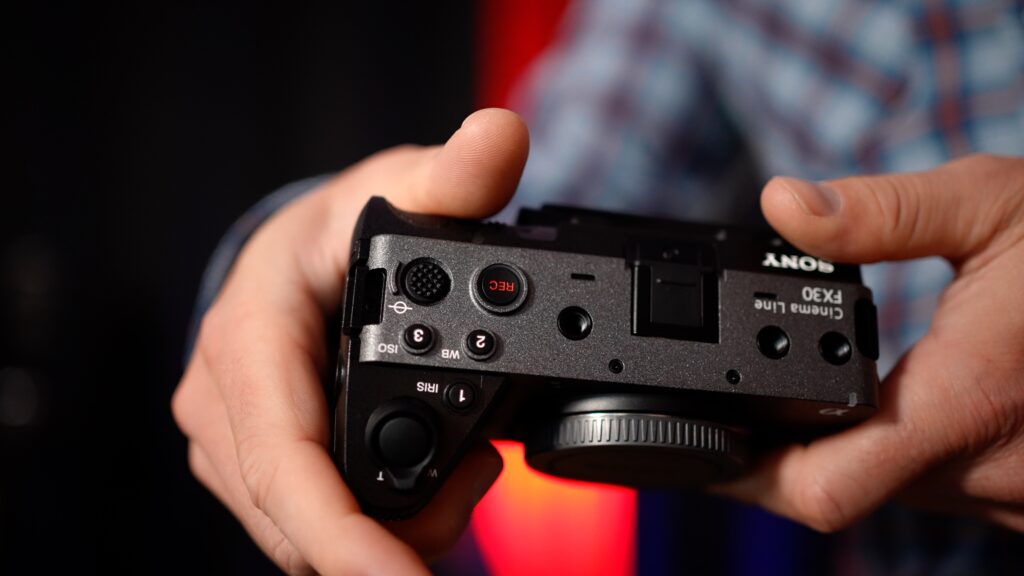
The GH6 has a much better-positioned power switch that’s far easier to get to and more custom buttons on the front. The top dials feel much more fluid under your fingers and thumbs, and there’s a dedicated lock switch on the left.
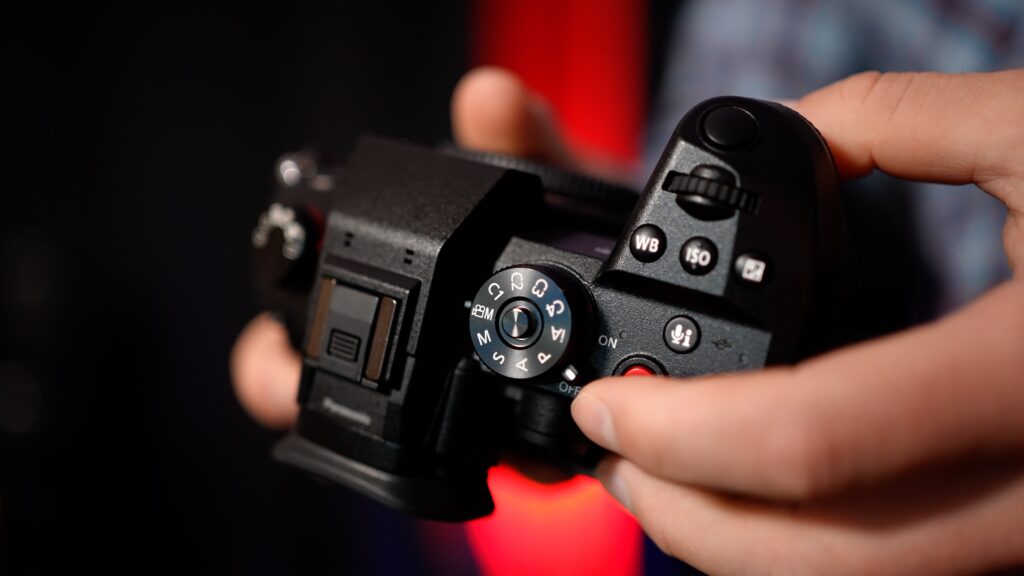
We also get a dedicated Quick Menu button and audio buttons. While GH6 is much heavier, coming in at 739 grams, while the FX30 weighs only 562 grams, it has more options at the expense of weight. Micro Four Thirds used to be micro, but not anymore.
Navigating the Menus on both cameras is excellent. Panasonic had the best menu system for years, but Sony caught up. The FX30 menu is the same great menu found in their FX3 and is a huge step up over older cameras like the Sony A7C.
In addition, we get touch functionality on both LCD screens making menu selections easy if you don’t want to use the wheel and center buttons.
The FX30’s body feels more premium in hand but is not as resistant to the elements as the GH6, so I will call this a tie, depending on your shooting scenario and preferences.
Displays
Let’s cover the displays on the GH6. This camera has the best implementation of a rear fully articulating screen. Not only does it flip forward, but it also can be hinged in two positions on the back. This is a massive ergonomic upgrade over the FX30 when you are behind the camera.

Both LCD screens are easy to see if you’re in front of the camera, providing you have the LCD on the Sony set to Sunny Mode. The GH6 selfie screen is also slightly larger, and we get an EVF, so the win goes to the GH6. But, like me, those buying the FX30 might not consider the EVF a deal-maker.
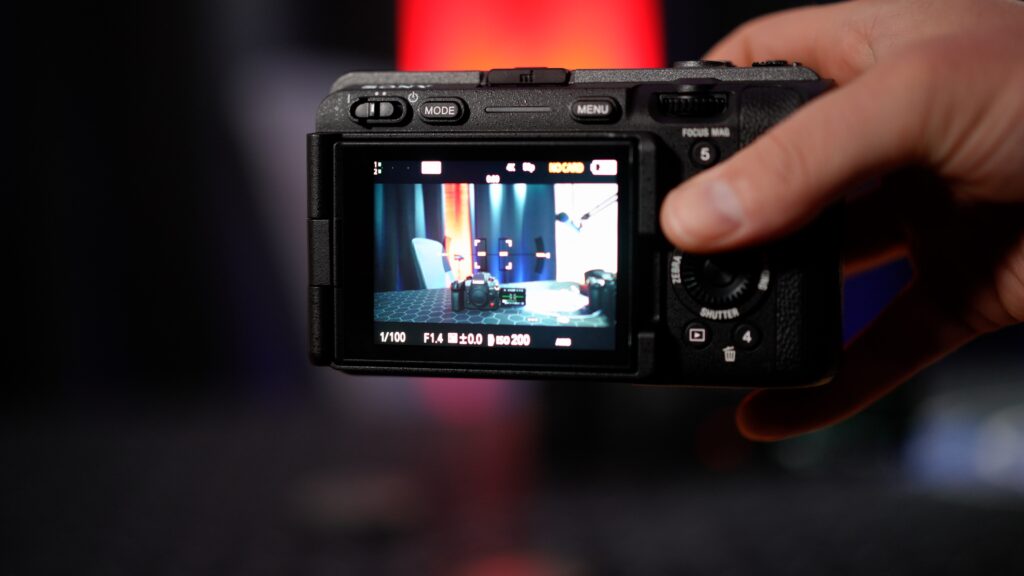
With that in mind, the GH6 has the best flip screen I have used so far, and while it’s not breaking any new resolution ground, it’s the most versatile for both video and photography.
The win goes to the GH6, but both are great.
Autofocus
When it comes to continuous video autofocus for video, the Sony FX30 is in another dimension. Sony’s PDAF will track your eye or subject anywhere within the frame. The eye tracking is hilarious to use for the first time if you’re coming from a contrast DFD system. However, it fills you with confidence when shooting alone out in the field or if you need to pull focus by tapping on the screen.
Panasonic’s DFD system is fine for photography, but it’s never been perfect for video. The GH6 took this technology to the limit, but sadly, it’s not in the same league as the Sony FX30.
While Panasonic has always put in the best tools for pulling focus manually, it’s not even close – Sony wins. So if you film yourself or others without worrying about the autofocus not keeping up, go for the Sony FX30.
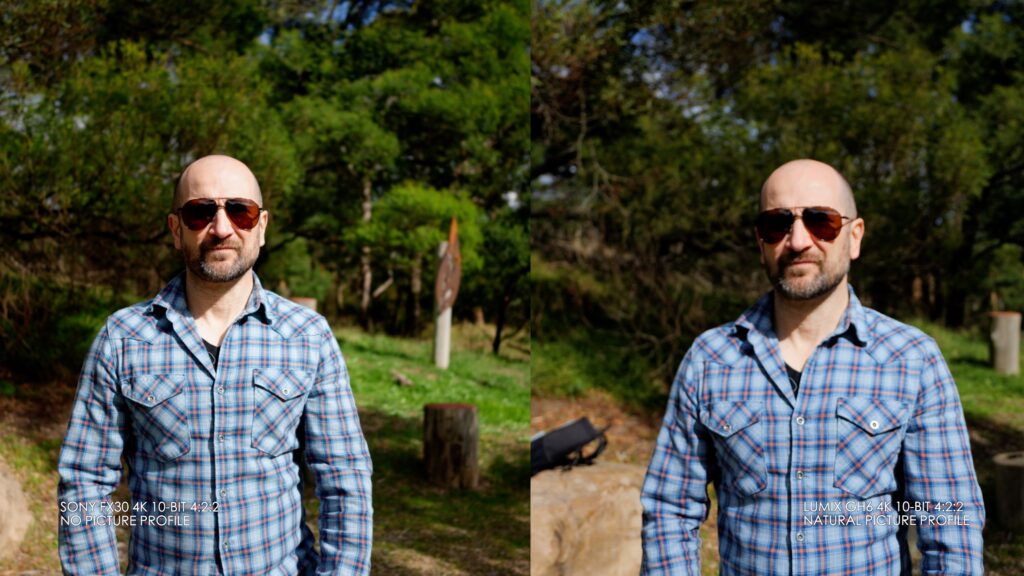
In Body Image stabilization (IBIS)
Let’s talk about IBIS or in-body Image stabilization. One of the clear benefits of Micro Four Thirds has always been their ability to stabilize the sensor without loads of digital crops. The Lumix GH6 has arguably the best IBIS system on the market, making it great for follow shots, vlogging, or any other type of action.
If you pair the GH6 with a lens with optical image stabilization, you can get Dual IS, which gives you even better results. Furthermore, the GH6 supports IS Boost, which looks like the camera is on a handheld tripod.
I first tested IS Boost on a GH5, one of the best features of any mirrorless camera. This is one of the main reasons I’ve stuck with Lumix for handheld work.
The IBIS on the FX30 is severely worse than the GH6 in every way; it’s not even close. The only saving grace is that you can run the FX30’s footage through Sony Catalyst browse for enhanced stabilization. However, this is an extra step and won’t be for everyone depending on the performance of your editing workstation.
The win here for best out-of-camera IBIS goes to the Lumix GH6.
Recording Options
Let’s cover the recording options because this got much more interesting as of April 12, 2023. Sony just released a new firmware update giving users DCI-4K, finally! The FX30 is part of the Cinema line of cameras and previously omitted features available back on the original GH5. With that in mind, there are some common ground and clear-cut differences.
Both cameras can shoot 10-bit 4k and DCI 4k, and the image out of both is beautiful. Both cameras support all-intra recording; for most shooters, that’ll be enough to keep you happy. While the GH6 has always supported Anamorphic, the latest firmware update to the FX30 also has anamorphic support, which is huge for Sony filmmakers.
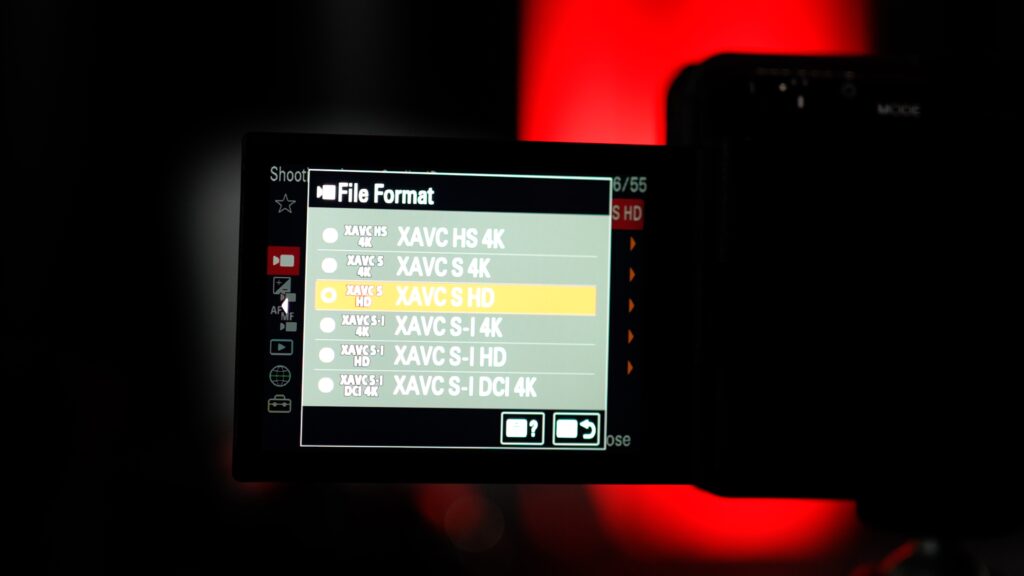
The GH6, however, supports recording up to 5.7K with a 17×9 aspect ratio with the option of a full 5.8k open gate recording. This full sensor readout makes cropping in post-production much easier if you plan on delivering to YouTube and an Instagram reel, for example.
Furthermore, the GH6 can record Apple ProRes to a CFExpress Type B Card or out over USB to a Samsung SSD. While content creators will be more than happy with either camera, the win goes to the GH6 regarding recording options. The menu system has so much more, depending on your situation.
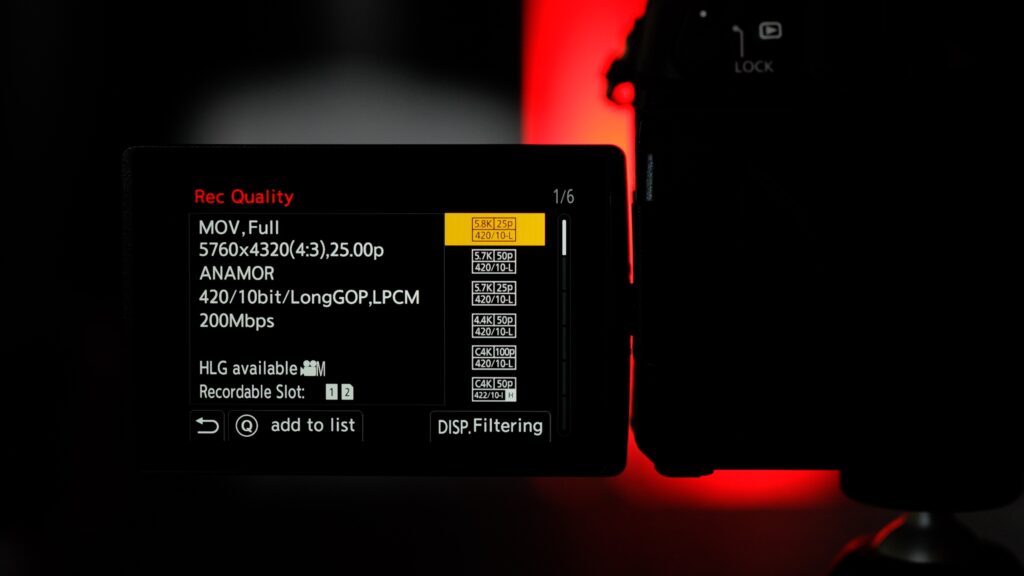
Image Quality
Let’s talk about image quality. Sure, we are comparing a smaller Micro Four Thirds sensor to a larger APSC-C sensor, but it’s not quite as simple as that. The 4K quality out of both cameras is great.
Both cameras are excellent for shooting 4k 24/25/30/50 or 60p. However, the GH6 has a bit of a softer look than the Sony FX3, and I find when shooting in the natural profile on the Gh6, I bump the sharpness up +3 in the menu option.
While both cameras have great 4K 120 quality, the win goes to the GH6. There are no additional crops and penalties for shooting 4k120 on the Lumix, where the FX30 has a 1.6x crop on top of the 1.5x crop. The FX30’s crop makes for a somewhat noisier image than the GH6, but both can be used with great results in decent lighting.
Low Light Performance
Low light goes to the FX30. Whether you’re shooting in LOG or a standard picture profile, the results are cleaner and nicer.
Shooting at ISO 2000 on the FX30 looks much nicer than ISO 2000 on the GH6 with or without Dynamic Range Boost On.
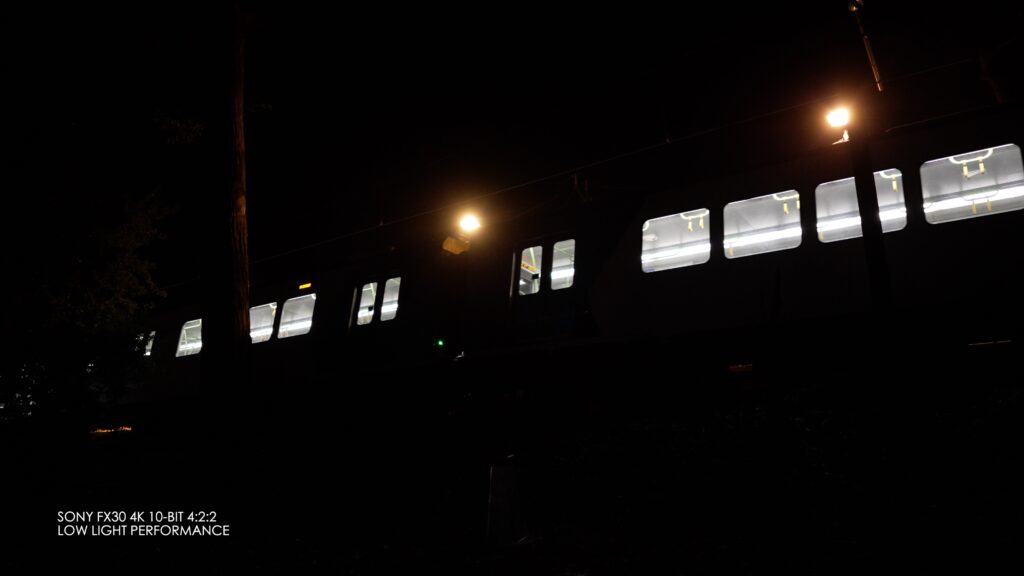
Get a GH6 or FX30 here: B&H Photo | Walmart | Amazon AU | Amazon DE | Amazon UK | Amazon Canada
The Dual Native ISO sensor of the FX30 is a much easier process to work with over the Dynamic Range boost feature of the GH6. However, while the dynamic range of the GH6 is quite nice, the APS-C sensor has its beat.
The rolling shutter is much better on the GH6 than the FX30.
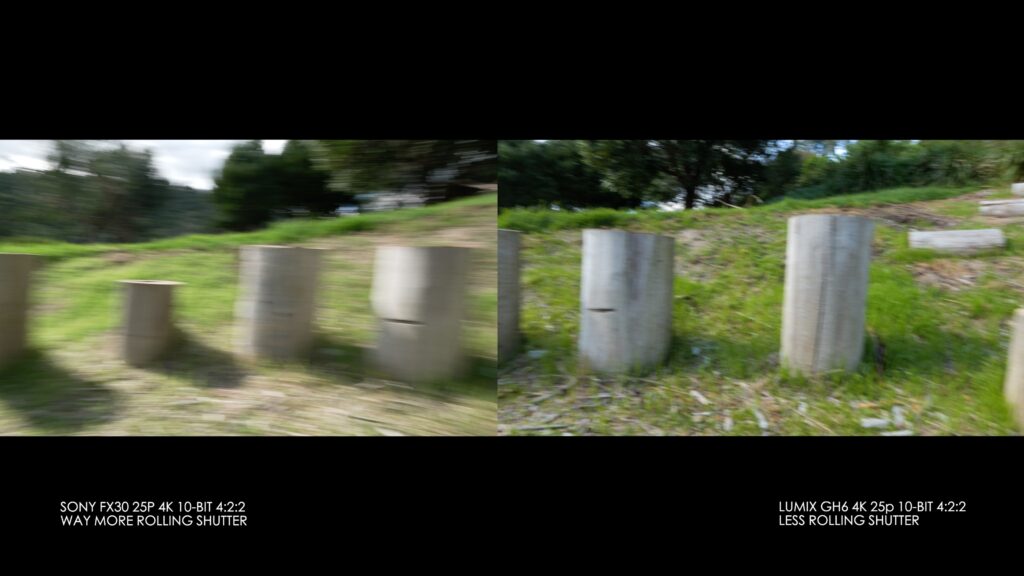
While the Color Science is great on both cameras, the Panasonic wins for shooting in its VLOG format. VLOG is a lot easier to get nicer-looking footage than SLOG3. If you’ve never shot with log, you can film with VLOG on the GH6, drop the Pansonic’s nicest out on there, and you’ll be almost done.
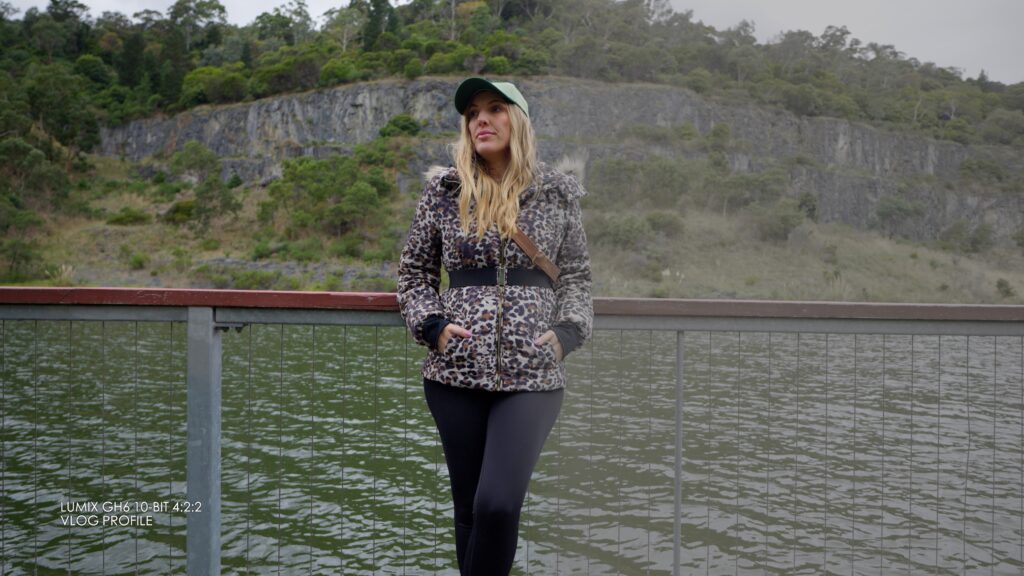
The skin tones look better and are a much faster workflow color grading than SLOG3. If you’re used to SLOG3, this won’t be a deciding factor. The FX30 has a color profile called S-Cinetone which is quite nice for shooting in low-contrast situations, but I can get a similar look with a small tweak on Cine-D or the Flat profile on the GH6. It’s much of a muchness.
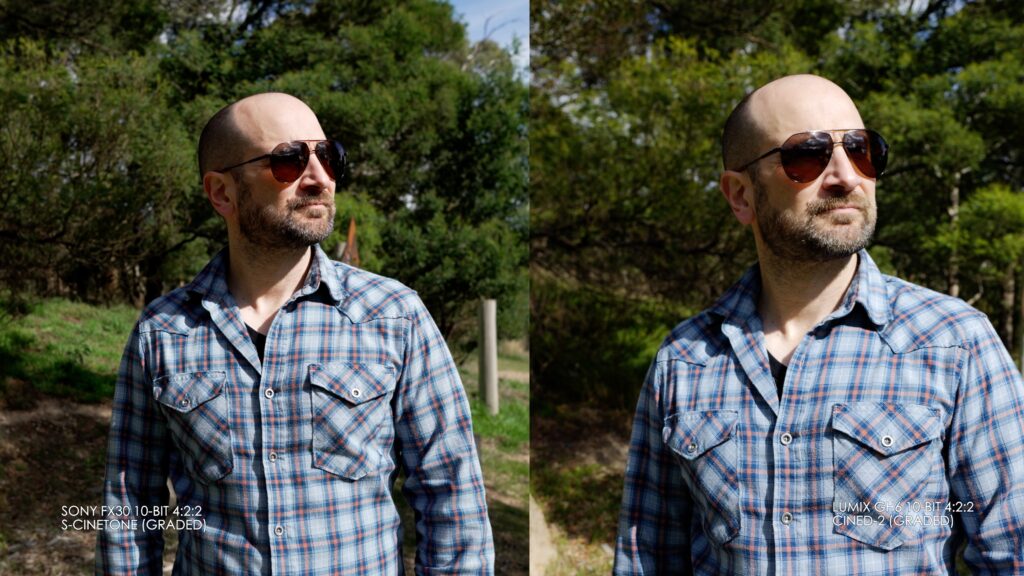
Resolution Bump
Lastly, the GH6 can shoot up to 5.9k 60p, a big resolution bump over the FX30. The FX30’s 4k is a downsampled 6k image. You can see a huge difference in resolution between 4K on the Sony and 5.9k on the GH6. (see my video above for details)
And while it looks great, the GH6 wins when you punch in to compare the difference. Shooting at 4k with autofocus, the FX30 is my favorite. The Improved Dynamic range of the FX30 might be enough to sway you to a camera with a larger sensor. Shooting 4k120 in VLOG or higher resolutions, the GH6 wins. I am going to call this a tie based on these factors.
Both systems have pros and cons, depending on your shooting scenario.
Audio Capabilities
Both cameras have a great set of audio preamps built in. As a result, the audio will be the same when using a wireless pack or shotgun microphone. Additionally, both cameras can support an external XLR adapter for professional shotgun microphones.
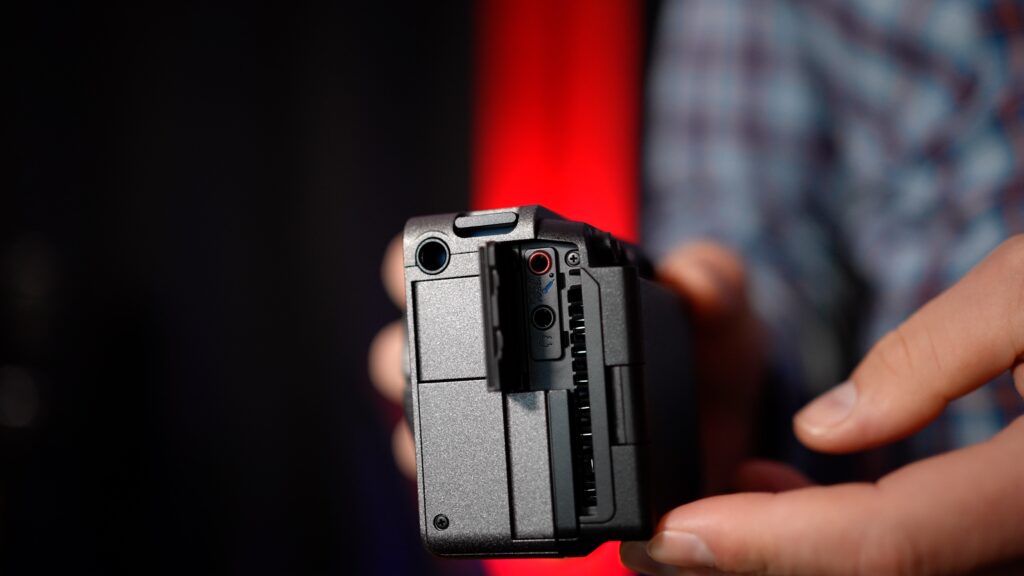
The main difference is that the Panasonic can handle a line-level signal, and the onboard microphones are of nicer quality. Still, they both sound the same if you’re using external audio. Each camera can record up to 4 channels of audio thanks to the XLR adapter and 3.5mm input jack, so overall, this is a tie.
Photography Capabilities
Regarding photography, it’s not even close – the GH6 gets the easy win. Not only do we get a mechanical shutter and faster shutter speed options, but we also get a handheld high-resolution mode.
This high-resolution mode can stitch eight photos which creates a massive 100mp files in the camera. Thanks to the camera’s 7.5 stops of stabilization, High-Resolution Mode, 25mp sensor, and excellent burst modes, the GH6 is the winner.

Which Would I Choose, and which one is the best?
Thanks to the autofocus, the FX30 is better for talk-to-camera shoots. Whenever I am behind the camera and need the most stable footage, the GH6 is a winner. In a low-light situation, I’d take the FX30, as it’s cleaner at higher ISO values. Whenever I shoot an Anamorphic video, the GH6 again wins, thanks to the built-in tools.
The GH6 is a better overall hybrid camera and is great for those with more experience. On the other hand, the FX30 is a better choice if you’re just getting started and you prefer Autofocus and great 4k image quality above higher resolution video and professional video codecs like Pro Res.
I enjoy both of these cameras. Both cameras will get you excellent results if you can work to their strengths. Each camera has a killer set of features, benefits, and tradeoffs that will get you excellent results if you know what you’re doing. Thanks for checking out my review, and don’t forget to check out my YouTube channels for more videos on each camera body.
Get a GH6 or FX30 here: B&H Photo | Walmart | Amazon AU | Amazon DE | Amazon UK | Amazon Canada

